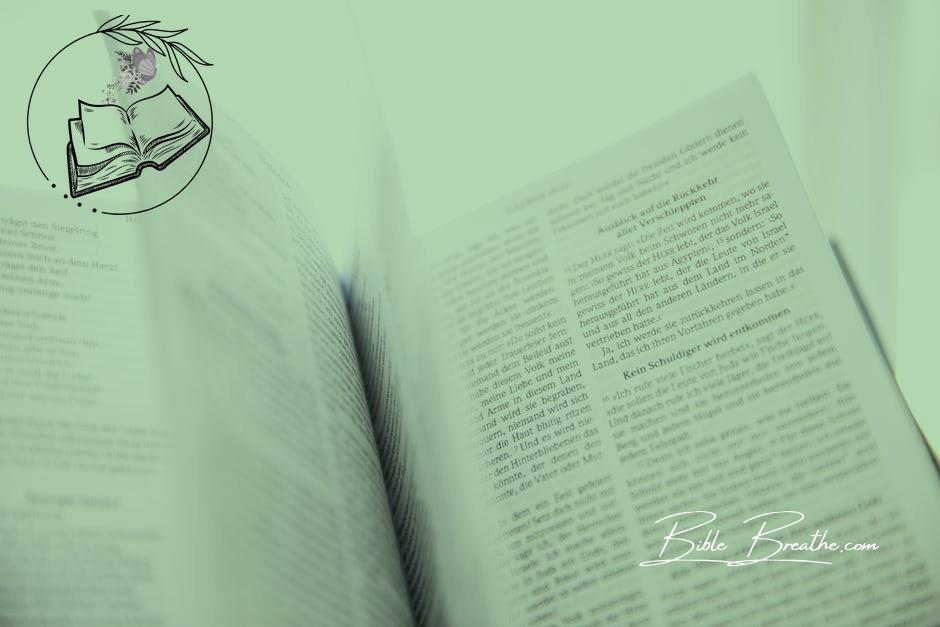How is the Bible divided, folks?
Picture it like a divine sandwich with layers of goodness!
The Bible isn’t just a random collection of stories; it’s carefully divided to make sense of the divine narrative.
In the Old Testament, you’ve got the Books of the Law, the rulebook of the faith game, and the Prophets, God’s megaphone to humanity.
On the flip side, the New Testament offers up the Gospels, like eyewitness testimonies of Jesus’ wild ride, and the Epistles, the ancient emails filled with heavenly wisdom.
But it’s not just about labels; it’s about understanding the roadmap of God’s love story.
From the original Hebrew and Greek to the timeline of events, it’s all in there.
This division isn’t just for show; it’s a way to keep the divine promise alive.
Join me on this journey as we unwrap the layers of the Bible’s structure, revealing the heart of God’s message across time. 📜✨
Key Takeaways
- How is the Bible divided? Understanding how the Bible is divided is crucial for navigating and comprehending this sacred text. It’s not just a random collection of books; its structure holds profound significance in the interpretation of its message.
- The division of the Bible into the Old and New Testaments is a fundamental aspect. The Old Testament contains the religious writings of the Hebrew Bible, while the New Testament focuses on the life, teachings, and message of Jesus Christ and the early Christian community. Recognizing this division helps readers contextualize the content and its historical development.
- Within each testament, there are further divisions into books, chapters, and verses. These divisions aid in referencing specific passages and locating particular stories, teachings, or prophecies. They make it easier to explore the Bible systematically and access its wealth of knowledge.
- The Bible’s division reflects its overarching narrative, which moves from creation and the early history of humanity to the covenant with Israel, the life and teachings of Jesus, the growth of the early church, and ultimately, the eschatological hope of the second coming of Christ. This narrative structure allows readers to trace the unfolding plan of salvation throughout history.
- Reading the Bible with an understanding of its structure enhances comprehension. It enables readers to explore themes, compare passages, and appreciate the continuity and development of key concepts and teachings across the different books. Ultimately, grasping the Bible’s division is a valuable tool for anyone seeking to engage deeply with its content and spiritual message.
Unveiling the Bible’s Split: Old vs. New Testament
Photo modified by BibleBreathe.com. Original photo by Joël Super on Pexels
When you crack open the Bible, it’s like entering a vast library with two distinctive wings.
Picture this: just like in a library where you’ve got your fiction and non-fiction, the Bible is neatly divided into two main sections: the Old Testament and the New Testament.
These are like the solid pillars that hold up the whole edifice of biblical wisdom.
The Old Testament: A Blast to the Past
Ever wanted to hop on a time machine and journey back to the days of yore when the world was just sprouting?
Well, the Old Testament is your ticket!
It’s like stumbling upon a chest of historical treasures, poetry, and ancient wisdom.
It’s where the stories of creation unfold, the tales of heroes like Abraham and Moses come to life, and where God’s guidance is etched in laws and the writings of the prophets.
In the beginning God created the heaven and the earth.” – Genesis 1:1 (KJV)
The New Testament: A Fresh Start
Now, let’s fast-forward to a different era—a time when rocking sandals was the trend, and the Roman Empire was the big deal.
This is where the New Testament takes the stage.
It’s like the thrilling sequel to the Old Testament, introducing a brand new cast, led by Jesus, the central figure.
Here, you’ve got the Gospels, akin to biographies of Jesus, and the Epistles, functioning like insightful letters to guide the early Christian communities.
For God so loved the world, that he gave his only begotten Son, that whosoever believeth in him should not perish, but have everlasting life.” – John 3:16 (KJV)
Connecting the Dots
Now, why the division between old and new?
It’s kind of like marking history as “Before Christ” (BC) and “Anno Domini” (AD, which means “In the Year of Our Lord” in Latin).
The Old Testament sets the stage, and the New Testament rolls out the next act, unveiling a fresh covenant and a new angle on faith.
In simple terms, the Bible is an epic tale, split into two volumes, each with its own set of characters, settings, and themes.
The Old Testament roots us in history, while the New Testament brings the message of hope and salvation through Jesus Christ.
It’s like having two different halves of a puzzle that lock in seamlessly, revealing the magnificent picture of God’s grand plan for humanity.
So, whether you’re digging into ancient tales or seeking wisdom for today, both the Old and New Testaments hold something truly amazing.
The Bible: A Divine Blueprint
Photo modified by BibleBreathe.com. Original photo by Kelly on Pexels
Ever pondered how this ancient treasure chest of wisdom, the Bible, is laid out and organized?
Well, let’s pull back the curtain and explore the captivating structure of the Bible together.
The Old Testament: God’s Connection with Israel
In this vast library of divine wisdom, the Old Testament stands as a testament to God’s profound relationship with the people of Israel.
It’s like the foundation of a majestic literary mansion, and here’s how it’s broken down:
Books of the Law: Genesis to Deuteronomy
This part is like the Bible’s “Genesis,” where the epic tale kicks off.
It’s like the blueprint of God’s grand design for creation.
We journey through the tales of Adam and Eve, Noah and his ark, Abraham’s bold faith, and the Exodus from Egypt with Moses.
These books set the rules, literally, including the Ten Commandments and vital guidance for righteous living.
History: Joshua to Esther
Imagine this as the Bible’s history book, where you’ll discover the triumphs, trials, and tribulations of the Israelites.
Joshua leads them into the Promised Land, David ascends to being a king after God’s heart, and Esther shows us courage in adversity.
It’s like a historical documentary, packed with real-life drama and divine intervention.
Poetry: Job to Song of Songs
Picture this section as the Bible’s poetic and emotional heart.
Job’s trials and Psalms’ soulful verses offer comfort during times of suffering.
Proverbs impart practical life lessons, and the Song of Songs celebrates the beauty of love.
It’s like a collection of heartfelt letters and poems, speaking to the human experience.
Prophets: Isaiah to Malachi
Consider this part as the Bible’s prophetic voice, echoing across the ages.
Isaiah’s visions, Jeremiah’s lamentations, and Daniel’s dreams provide glimpses into God’s plans and warnings to His people.
These prophets are like divine messengers, urging us to stay faithful and turn to God.
As we dig deeper into the Bible’s structure, remember, it’s not just a book; it’s a journey through time and faith.
“Thy word is a lamp unto my feet, and a light unto my path.” – Psalm 119:105 (KJV)
Grasping the Bible’s Organization
The Bible is like a beautifully woven tapestry with threads of history, poetry, prophecy, and divine guidance.
It’s divided into the Old Testament, which we’ve just explored, and the New Testament, which holds the teachings of Jesus Christ and the early Christian church.
These two parts together form the complete Bible, a source of wisdom, inspiration, and spiritual guidance.
But why is it structured this way?
To understand, we must delve into the concepts of covenant, the Hebrew and Greek languages, chronological order, and the significance of the Gospels, Epistles, and other books.
The Bible’s structure isn’t just about chapters and verses; it’s about the unfolding story of God’s love, grace, and plan for humanity.
So, as you navigate this divine library, remember that each section serves a unique purpose in guiding us on our spiritual journey.
“In the beginning was the Word, and the Word was with God, and the Word was God.” – John 1:1 (KJV)
The New Testament: Jesus and His World-Changing Church
Photo modified by BibleBreathe.com. Original photo by Monstera Production on Pexels
Ah, the New Testament—a sunrise after a long, dark night.
It’s like the moment the sun peeks over the horizon, illuminating everything in its gentle glow, bringing forth the brilliance of Jesus and the birth of the Christian church.
Let’s zoom in and unpack this treasure:
The Gospels: Matthew to John
Now, imagine the Gospels as the heartbeats of the New Testament, pulsating with the life, teachings, and ministry of Jesus.
These aren’t your run-of-the-mill biographies; oh no, they’re more like four distinct lenses focusing keenly on Jesus, each lens crafted by Matthew, Mark, Luke, and John, presenting their unique perspectives.
I am the way, the truth, and the life: no man cometh unto the Father, but by me.” – John 14:6 (KJV)
History: The Book of Acts
Acts, oh Acts!
It’s the action-packed sequel, bursting with the vigor of the early Christian church taking its form.
Fueled by the teachings of Jesus and the fiery Holy Spirit, it’s like reading the origins of a movement that echoes through time, even to this very day.
But ye shall receive power, after that the Holy Ghost is come upon you: and ye shall be witnesses unto me both in Jerusalem, and in all Judaea, and in Samaria, and unto the uttermost part of the earth.” – Acts 1:8 (KJV)
Letters: Pauline and General Epistles
Envision a series of handwritten letters traveling through the corridors of time.
That’s the Epistles for you.
Pauline Epistles, penned by the apostle Paul, read like ancient emails packed with profound theological insights.
On the other hand, the General Epistles are like postcards from various apostles, addressing specific issues in the early Christian communities.
For by grace are ye saved through faith; and that not of yourselves: it is the gift of God.” – Ephesians 2:8 (KJV)
Prophecy: The Book of Revelation
And last but not least, Revelation—it’s like a cryptic, symbolic movie trailer of the future.
Picture this: a glimpse into the grand finale of human history, the dramatic return of Jesus, and the ultimate triumph of good over evil.
It’s akin to peering through a keyhole into the divine master plan.
“I am Alpha and Omega, the beginning and the ending, saith the Lord, which is, and which was, and which is to come, the Almighty.” – Revelation 1:8 (KJV)
In essence, the New Testament is the riveting story of Jesus, the monumental birth of the Christian church, and the ageless wisdom and guidance it unfurls.
It’s like a roadmap, guiding us to live lives filled with meaning and purpose, anchored firmly in faith and love.
Whether you seek inspiration, guidance, or simply a deeper understanding of Christianity, the New Testament is a treasure chest waiting for you to dive in and discover its richness.
Unveiling the Bible’s Timeless Tale
Ever mused about the rhythmic dance of time within the pages of the Bible?
How does this ancient script, flowing across centuries and cultures, narrate its ageless story?
Let’s journey into the captivating chronology of the Bible together.
Grasping the General Timeline
Picture the Bible as a sprawling canvas upon which the strokes of history and faith are beautifully painted.
To fathom its chronology, envision it as a grand timeline, stretching from the dawn of creation to the early days of the Christian church.
In the Old Testament, we journey back to the genesis of the world in Genesis, wander through the ancient tapestry of Egypt with Moses, and witness the rise and fall of kingdoms in the historical books.
The prophets carry divine messages to a people in flux, and the poetic books offer enduring wisdom.
Now, fast forward to the New Testament, and you’ll find yourself amidst the days of Jesus Christ, as vividly depicted in the Gospels.
It’s akin to stepping into the bustling streets of Jerusalem, hearing His teachings, witnessing His miracles, and comprehending His profound sacrifice on the cross.
The Epistles extend guidance to the early Christian communities, and Revelation unveils visions of the future.
But here’s the breathtaking beauty: amidst temporal gaps and cultural shifts, the Bible’s message remains strikingly consistent.
It’s a testament to the enduring power of faith and divine revelation.
Contrast in Old and New Testament Languages
To fully appreciate the Bible’s depth, reflect on the languages in which it was penned.
In the Old Testament, you’ll encounter Hebrew, a language brimming with tradition and significance.
It’s like ancient scrolls of wisdom, passed down through generations.
In the New Testament, you’ll uncover Greek, the language of scholars and philosophers.
It’s as if the Bible’s message expands to embrace a wider audience, reaching out to both the intellectual and the spiritual seekers of that time.
These linguistic subtleties add layers of meaning to the text, making it a vibrant tapestry of cultures and eras.
It’s akin to a treasure trove of wisdom, awaiting discovery by those earnestly seeking it.
“Thy word is true from the beginning: and every one of thy righteous judgments endureth forever.” – Psalm 119:160 (KJV)
While you journey through the Bible’s chronology and the languages that shaped it, remember this isn’t merely a historical document; it’s a living testament to God’s enduring love and guidance.
So, whether you’re traversing the Old Testament or delving into the New, know that each page carries the timeless message of faith and hope.
Unveiling Testament Meanings: Decoding the Essence
Photo modified by BibleBreathe.com. Original photo by Sami Aksu on Pexels
In this vast library of wisdom, the term “”Testament”” holds more weight than meets the eye.
It’s not some dusty, archaic term; it’s the key that unlocks the very structure and heart of the Bible.
So, let’s peel back the layers and dive into the true meaning of “”Testament”” and how it draws a clear line between the Old and the New.
The Essence of “Testament”
Let’s break it down—”Testament” in the biblical realm is like a sacred contract or a significant, solemn agreement.
We’re not talking your run-of-the-mill handshake deal; we’re talking about a covenant carrying divine weight.
Picture it as a binding pact between humanity and the divine, a promise that essentially scripts the course of history.
The Old Testament, at its core, is akin to the foundational clauses of this ancient contract.
It’s packed with God’s promises, laws, and the rich history of God’s relationship with the Hebrew people.
It’s like the bedrock of a magnificent structure, providing the guiding principles upon which everything else is built.
“The Lord is my shepherd; I shall not want.” – Psalm 23:1 (KJV)
Unveiling the Old and New Distinctions
Now, let’s zoom in on the unique features of these two halves of the covenant.
The Old Testament represents the older ways, a preparatory phase where humanity was learning about God’s ways, and a Messiah was promised but still shrouded in anticipation.
On the flip side, the New Testament is akin to the glorious fulfillment of that ancient promise.
It’s like the sunrise after a long, dark night.
It ushers in Jesus Christ as the central figure, the long-awaited Messiah who fulfills the ancient prophecies and brings forth a new covenant.
Think of it as an upgrade to the divine contract.
“For this is my blood of the new testament, which is shed for many for the remission of sins.” – Matthew 26:28 (KJV)
A Covenant That Shaped and Shapes History
In a nutshell, the term “”Testament”” in the Bible isn’t just a mundane word; it’s a profound concept.
It’s the bridge between the divine and the human, embodying God’s guidance and promise of salvation.
The Old Testament sets the stage, and the New Testament reveals the superstar of the show: Jesus Christ.
Together, they craft a covenant that has molded the course of history and continues to ignite inspiration and provide guidance to people even in our present day.
Navigating the Bible’s Vast Landscape: Choosing Your Trailhead
Photo modified by BibleBreathe.com. Original photo by Karolina Grabowska on Pexels
So, you’ve got this marvelous book called the Bible in front of you, but where’s the best place to kick off your adventure?
It’s like stepping into an epic journey, and I’m here to be your trusted guide.
Choosing Your Starting Point
Imagine the Bible as an expansive forest, teeming with diverse landscapes.
To kickstart your expedition, think about commencing your journey from these pivotal points:
- The Gospel of Mark: Picture this as the trailhead, where you meet Jesus in the fast-paced Gospel of Mark. It’s like an exhilarating introduction to His life, teachings, and awe-inspiring miracles. Mark’s storytelling will have you at the edge of your seat.
- Psalms: Envision this as a tranquil garden within the forest. The Psalms serve as a refuge for the soul, offering prayers, praises, and deep reflections. They provide solace and spiritual nourishment.
- Genesis: Take a step back to the very origins of everything. Genesis is like the root system of the Bible’s tree, elucidating the creation of the world, the genesis of humanity, and the bedrock of faith.
Recommended Journey for Beginners
Now, let’s discuss the optimal route to navigate this expansive terrain.
It’s akin to planning a road trip with stops at breathtaking viewpoints:
- Commence with the Gospels: Start with the life and teachings of Jesus found in the Gospels (Matthew, Mark, Luke, and John). It’s like setting your compass to the heart of Christianity.
- Proceed to Acts: Following the Gospels, venture into the Book of Acts. It’s akin to hitting the open road, bearing witness to the early days of the Christian church and the propagation of the gospel.
- Delve into the Old Testament: Now, journey back in time to the Old Testament. Begin with Genesis and traverse the historical books, poetry, and prophets. It’s like exploring the rich tapestry of history and spiritual wisdom from the ancient world.
- Explore the Epistles: Post your exploration of the Old Testament, transition to the Epistles (letters) in the New Testament. They offer practical guidance for Christian living and deepen your comprehension of faith.
Remember, reading the Bible is like encountering a multi-faceted masterpiece.
Each book provides a unique perspective, enriching the beauty of the whole.
Take it step by step, relishing the experience.
“Thy word is a lamp unto my feet, and a light unto my path.” – Psalm 119:105 (KJV)
As you embark on this expedition, recognize that the Bible is a treasure trove waiting to be unearthed.
Whether you commence with the Gospels, the Psalms, or Genesis, each stride brings you closer to the heart of God’s message, guiding you through the diverse landscapes of faith and wisdom.
Frequently Asked Questions (FAQs) About How Is The Bible Divided
Why are there two testaments?
The Bible consists of two testaments, the Old and the New.
The Old Testament contains the Hebrew Scriptures, while the New Testament focuses on the life, teachings, and ministry of Jesus Christ and the early Christian church.
Together, they provide a comprehensive narrative of God’s covenant with humanity.
How are the books of the Bible grouped?
The books of the Bible are grouped into the Old and New Testaments.
The Old Testament contains texts written before the birth of Jesus, while the New Testament contains texts about Jesus and the early Christian church.
Each Testament is further divided into various genres and themes.
Why isn’t the Bible in chronological order?
The Bible’s books aren’t in chronological order due to the diverse authors, historical contexts, and thematic arrangements.
The Bible is structured by genres, placing books under categories like historical, poetic, prophetic, and epistolary, making it an arrangement based on literary styles and themes.






